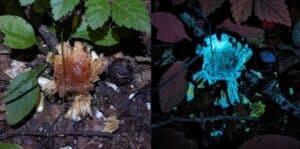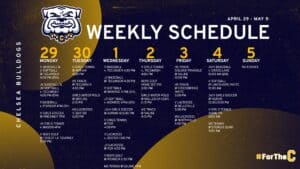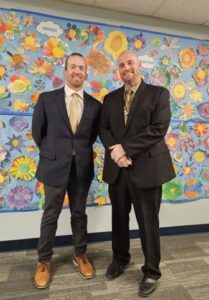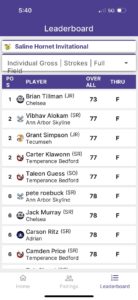
Story and photos by Master Naturalist, Doug Jackson
Hey man, there’s like an invisible yet psychedelic universe in our own back yards. It’s so close and so far out, man.
Nature provides a variety of fascinating ways of producing light. Last month’s naturalist article brought to light an example of bioluminescence with the firefly. This article will focus on another form of biological light production known as biofluorescence.
Biofluorescence is when the pigment of living cells fluoresces – gives off light when exposed to a higher energy light. This differs from bioluminescence, which is caused by chemical reactions within the living organisms.
To better understand fluorescence, it may be helpful to step back to better understand light and why things appear to have colors.
This gets heavy, man.

Light is electromagnetic radiation, which spectrum falls within a certain energy, or wavelength, range that is mostly visible to humans. Red light is lower energy and longer wavelength than that of violet at the other end of the spectrum.
Physicists describe light energy as a photon. Photons are quantum particles, that is, they simultaneously behave both as a particle and a wave.
When photons reach our eyes, they pass through the lens to the retina at the back of the eye. The retina is covered with photoreceptors called rods and cones. The cones are less sensitive to light than rods, but are more sensitive to different wavelengths of light. The cones and rods convert the photon energy to electrical impulses along the optic nerve to the brain which then interprets these impulses as different colors and brightness.
When all the different light colors are combined together, they form white light. A prism lens can separate white light into a visible full rainbow spectrum.
Objects around us appear to have color for a few different reasons.

The first way is by reflection. The object has pigment, which absorbs all the white light energy it is exposed to except for that of certain energies, or wavelengths. Those photons not absorbed are reflected back and are what we see and attribute to the object’s color.
A second way is by light refraction. Examples of this are the ruby throats of hummingbirds, blue feathers on bluebirds and blue jays, or any of the beautiful colors we see on butterfly wings. None of the above mentioned have any pigment, but are clear and colorless. The feathers’ and wing scales’ structures are such that they act like prisms and refract the white light. The color of light that is bent enough to escape the scales or feathers is what we see, if we’re at the correct angle.
The third way is from the object actually producing its own light at any particular wavelength. Bioluminescence and biofluorescence are example of this.
Fluorescence happens when photons of a certain energy, or wavelength, are absorbed by a particular chemical in the object’s pigment. This causes the molecules’ electron energy level to drop. This energy loss is released as a lower energy photon than that of the one absorbed.

Most visible fluorescence happens when a fluorescent object is exposed to ultra-violet light (UV). UV is just above the visible spectrum for humans, so it is invisible. But when absorbing UV light, a fluorescent object gives off light within the visible spectrum. The color of the light depends on the properties of the chemical in the pigment.
Trippy, man. Dig?
We can observe all sorts of fluorescence in nature if we are equipped with a UV light.
Many minerals fluoresce. Fluorite, one of the first minerals discovered with this property, and Yooperlite, a recently discovered fluorescent rock infused with Sodalite and found around Lake Superior in Michigan’s U.P., are just two examples.
Fluorescence can also be properties of living organisms. Certain plants, fungi, frogs, fish, spiders, insects, and arthropods have biofluorescence.
We can have more fun in the woods after dark these days now that powerful UV LED flashlights are more affordable and easily available.

We can find some interesting things fluorescing in the dark such as mushrooms, mycelium, millipedes, tomato hornworms, and swallowtail butterflies for example. It’s pretty cool. And yeah, did I mention mushrooms, man?
Why organisms have evolved to fluoresce can have many reasons. Many animals can see light in the UV range. Having UV reactive and fluorescent cells could give them advantages to reproduction, pollination, eating, camouflage, or other unknown reasons.
Nature can be so groovy beyond what we just observe during daylight hours. So get mellow, man. Take a trip with a UV flashlight some night and dig some heavy afterglow.
There’s a far out other universe right in front of you.
Right on.












